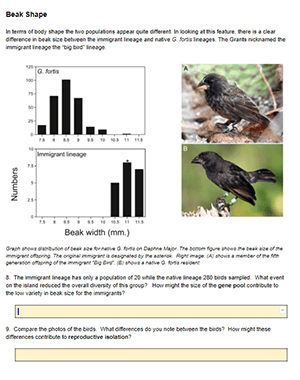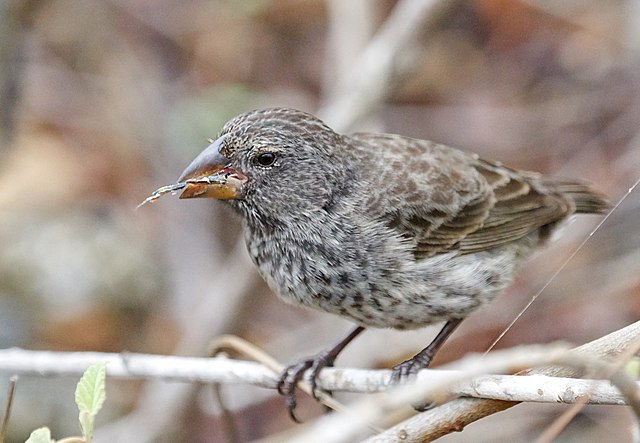
Students learn about a case where speciation occurred between two populations of finches. An immigrant species bred with the local birds on the island which created a new lineage of birds, which were different from the original population. Consequently, the original group would not breed with these new group, because they had a larger size and a different song. Students explore the case to learn about geographic and behavioral isolation which can lead to speciation.
The strange subpopulation, which were playfully named “Big Birds” would sing songs that the other birds didn’t recognize. Later, the new group moved to a different area of the island and would only mate with closely related members.
Students read about the study and examine graphs and charts that describe the data that was gathered by the Grants. If possible, students work together and discuss the case. Students must answer a final synthesis question about how the population models types of speciation. Students will be somewhat familiar with finch studies if they have already watched the HHMI video on speciation and finches.
Other Resources on Evolution

I spend a lot of time with students studying real populations and data to reinforce the concept that evolution is happening and not just something that happened in the past. Students have already studied stickleback fish and the rock pocket mouse. This worksheet focuses more on speciation and reproductive isolation.
I designed this worksheet for remote learning, so answer fields are shaded to help me grade them and to indicate where students should answer questions or review data. Alternatively, you could remove the shaded boxes for print material. This work was originally posted in another group, though I did modify it and change formatting for remote lessons. I do not know who the original creator was.

